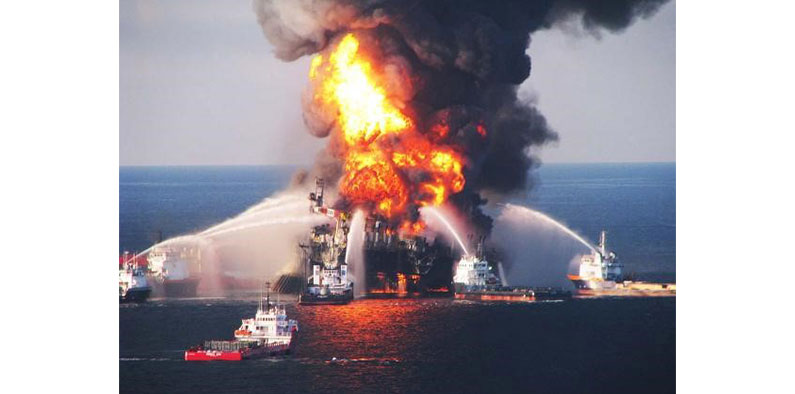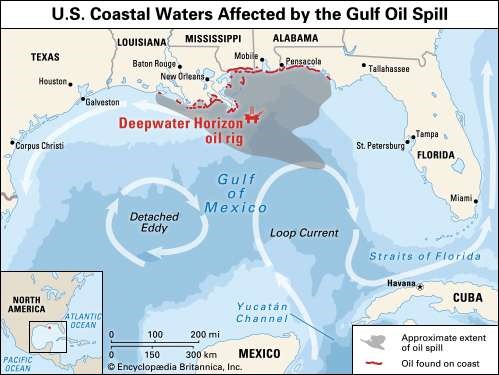Government data interconnection needed for joint operations and disaster response
- December 10, 2019
- Posted by: opedge
- Category: Uncategorized

Homeland defense and security operations during Natural and man-made disasters, have time and again demonstrated the need for government agencies to quickly interconnect their agency’s mission data of federal, state, local, tribal and private sector responders in order to provide shared situational awareness of the incident and combat the threat to the lives and property of our nation’s citizens. The real question is, what is the architecture that can support rapid and secure interconnections within hours or days of an incident?
In 2010, the Deepwater Horizon Mobile Offshore Drilling Unit ruptured oil well, an explosion on the rig that killed 11 people resulted in a historic spill of crude oil that contaminated or threatened the coast lines of four states in the Gulf of Mexico, The Department of Homeland Security’s lead agency for oil spills, the U.S. Coast Guard directed the response of over 40,000 personnel, 6,000 oil skimmers, 250 aircraft and a logistics operation from over 25 federal agencies, State, local, tribal, contractors and private sector responsible parties.
Every responder was required to use their parent agency’s own information systems to manage the assets dispatched to support the effort, capture the result of each day’s satellite and aerial surveillance of the oil spill area and the amount of oil recovered by their assets. The incident commanders used spreadsheets to collect this disparate agency information. In order to improve the information sharing, several efforts to create connections between federal data centers required multiple weeks to order circuits and build trust connections. This proved too long and arduous for a tactical operation that lasted just over 50 days total, resulting in the grossly inefficient and error prone use of spreadsheets to collect and consolidate data, published on hastily built, incident specific configured portals.
Each responder used their own agency’s email accounts and file servers for incident related documents. Due to the significant litigation that occurred as a result of the tragic deaths of the crew members and the environmental impact of the oil damaging or destroying shorelines, natural habitats and the disruption of the local fishing industry, lawyers required all responders to prove that their participating staffs captured all documents about the effort. Nearly 10 years later, after thousands of multiple government and private sector agencies sent their incident related content to a centralized records management team, the effort to collect and categorize all of this disparate data was still fully staffed as of 2017.
After the first 10 days of the incident, the US Coast Guard directed all responders to use NOAA’s Environmental Response Management Application (ERMA) and it’s Geographic Information System to create a situational awareness tool also known as a common operational picture (COP) for the incident commanders at the county, state and national level. ERMA was accessible to those who were officially part of the incident response.
ERMA was not accessible to leaders in the parishes, counties and state levels of government. Each state had their own emergency management information system and GIS. When they checked their “COP” each morning, they didn’t see any progress being made, which resulted in distrust of the Federal governments reporting on the cleanup and recovery operations. After a week, the lack of information sharing between the Incident response organization and the State and local governments affected, was understood. To eliminate the gap in information, the response organization employed data entry people to monitor updates to ERMA and manually enter the content into each State’s Emergency Management Information System. The inability to interconnect these information systems during a crisis response caused unneeded tension between federal, state and local officials and the public they served and was a significant distraction to the incident commanders.

During Incidents of National and Regional significance, with thousands of responders, the need to rapidly establish information sharing is critical to effectively minimize the impact to lives and property of those affected.
Equinix’s Interconnection Oriented Architecture and its Cloud Exchange Fabric provides a very elegant, secure and timely solution for interconnecting and sharing data between trusted government and private sector computing systems.
Equinix’s marketplace of over 200 cloud service providers and network service providers enable predetermined email and document management cloud based services to be rapidly scaled to support expanding numbers of responders, standardizing incident document repositories for the overall incident, significantly reducing the massive records collection and management efforts of every agency and company involved in the response.
Equinix’s Interconnection Oriented Architecture would have been an ideal way to provide all responding Federal, State and local officials with access to ERMA and see the same Geospatial Information System used by the Coast Guard, creating a shared situational awareness picture for operational commanders, those state and local officials being supported by the federal government’s response.
Use of the secure interconnection oriented architecture would have provided significant cybersecurity protections for the documents, communications and the critical shared situational awareness picture used in the response.
Looking to the future, the Federal Government can plan for using the Machine Data created by all responders cell phones and mission assets that include aircraft, ships, boats, vehicles and facilities for administration, Command and Control and logistics. This data could unlock opportunities, automatically provide asset tracking and information on fuel consumed, hours in operation and supplies provided, significantly reducing manual reports provided by responders providing them with more time to combat the incident.
Equinix’s marketplace would provide an ideal location to rapidly create a common repository for and collect and analyze the Big Data from the thousands of mobile devices and sensors to improve the overall operational performance and accounting for the cost to the government and taxpayers. American citizens expect a whole of government response with seamless collaboration …. A Smart Nation. The Equinix Digital Edge Playbook and blueprint can set the course for a Smart Nation.
Reference Link: https://www.equinix.com/digital-edge/solutions/federal-government/
